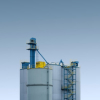Granular sulfur, a vital element in various industrial processes, plays a crucial role in agriculture, chemical manufacturing, and food preservation. This article aims to provide an in-depth analysis of the granular sulfur market, highlighting its size, key statistics, and future trends.
Global Market Overview
The global granular sulfur market is a significant segment of the sulfur industry, valued at approximately USD 4.3 billion in 2023. Over the past decade, the market has experienced steady growth, driven by increasing demand across various sectors. Historical data shows a compound annual growth rate (CAGR) of 5.2% from 2013 to 2023. Looking forward, the market is projected to reach USD 6.7 billion by 2030, with a CAGR of 6.1%.
Key market drivers include the rising need for sustainable agricultural practices, advancements in chemical manufacturing, and heightened focus on food preservation. The expanding global population and increasing food security concerns further bolster demand for granular sulfur.
Regional Market Analysis
North America
- Market Size: USD 1.2 billion
- Key Drivers: Advanced agricultural practices, robust chemical industry
- Major Players: ExxonMobil, ConocoPhillips
Europe
- Market Size: USD 900 million
- Key Drivers: Stringent environmental regulations, technological advancements
- Major Players: Gazprom, Shell
Asia-Pacific
- Market Size: USD 1.8 billion
- Key Drivers: Rapid industrialization, growing agricultural sector
- Major Players: China Petroleum, Sinopec
Latin America
- Market Size: USD 300 million
- Key Drivers: Expanding agriculture, improving infrastructure
- Major Players: Petrobras, YPF
Middle East & Africa
- Market Size: USD 100 million
- Key Drivers: Oil and gas industry growth, emerging markets
- Major Players: Saudi Aramco, Qatar Petroleum
Industry Segmentation
Agriculture
- Usage Statistics: 40% of global granular sulfur consumption
- Key Benefits: Enhanced crop yields, improved soil health
Chemical Manufacturing
- Usage Statistics: 35% of global consumption
- Role: Essential in sulfuric acid production and rubber vulcanization
Food Industry
- Usage Statistics: 15% of global consumption
- Importance: Extends shelf life, ensures food safety
Other Applications
- Usage Statistics: 10% of global consumption
- Includes: Mining, pharmaceuticals, and textiles
Market Dynamics
Market Drivers
- Rising demand for sustainable agriculture
- Growth in chemical manufacturing
- Increased focus on food preservation
Market Restraints
- Environmental regulations
- Price volatility
Market Opportunities
- Technological advancements
- Emerging markets
Market Challenges
- Supply chain disruptions
- Competition from alternative products
Competitive Landscape
Major Players
- ExxonMobil: Leading in North America
- Gazprom: Dominant in Europe
- China Petroleum: Key player in Asia-Pacific
Recent Mergers and Acquisitions
- Shell and ConocoPhillips: Strategic alliance to enhance market presence
- Sinopec and Saudi Aramco: Joint venture for advanced sulfur production
Key Strategies
- Investment in R&D
- Expansion into emerging markets
Technological Advancements
Recent innovations in sulfur extraction and processing have significantly impacted the market. Advanced technologies in purification and granulation processes have enhanced product quality and efficiency, reducing production costs and environmental impact.
Regulatory Landscape
Global regulations play a crucial role in shaping the sulfur market. Environmental policies, particularly in Europe and North America, enforce stringent standards on sulfur emissions and usage, driving technological advancements and sustainable practices.
Future Trends
The granular sulfur market is poised for continued growth, with emerging trends such as the increased use of sulfur in renewable energy applications and biotechnology. The global economic landscape, including trade policies and geopolitical factors, will also influence market dynamics.
Conclusion
The granular sulfur market is on a robust growth trajectory, driven by diverse applications in agriculture, chemical manufacturing, and food preservation. With technological advancements and evolving regulatory landscapes, the market presents significant opportunities for innovation and expansion.









